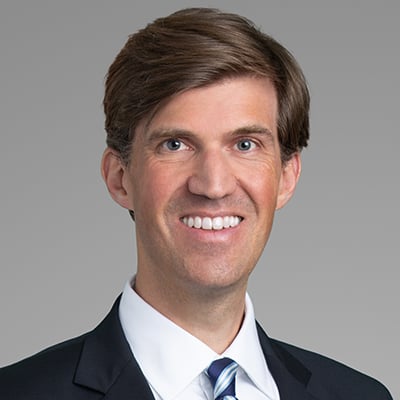EPA Finalizes Long-Awaited, Extensive Rule Targeting Methane Emissions in Oil and Natural Gas Operations
Overview
On December 2, 2023, at the 28th meeting of the Conference of the Parties (COP) to the United Nations Framework Convention on Climate Change, the Biden Administration announced its final rule under the Clean Air Act (CAA) to reduce methane and other air pollutants in the oil and natural gas industry (the Final Rule). The Final Rule builds on the U.S. Environmental Protection Agency’s (EPA) initial proposed rule and supplemental proposed rule from 2021 and 2022, respectively, and discussed in previous Kirkland Alerts. As discussed in greater detail below, the Final Rule is intended to significantly and aggressively reduce emissions of methane and volatile organic compounds (VOCs) in the oil and natural gas industry, both from new, modified and reconstructed sources via the rule’s final standards, and with guidelines in the final rule directing states to implement controls on existing sources.
This Alert provides contextual background information on the Final Rule, summarizes certain of its requirements, discusses notable differences from previous proposals and outlines some practical implications, including the potential for legal challenges.
Background
In November 2021, EPA proposed a rule to reduce methane emissions from oil and gas sources through the imposition of standards and requirements on new, modified and reconstructed sources, including source types that had never been regulated under the CAA, as well as Emission Guidelines (EGs) for states and incentives for Tribal governments to develop plans to reduce emissions from existing sources (2021 Proposed Rule).
In November 2022, EPA proposed a supplemental rule to reduce methane emissions, which addressed public comments to the 2021 Proposed Rule and made adjustments due to new legislation, namely the Inflation Reduction Act, discussed in more detail in our prior alerts linked here and here (2022 Supplemental Proposed Rule). The 2022 Supplemental Proposed Rule also proposed to add standards for certain sources not addressed in the 2021 Proposed Rule, to revise requirements for fugitive emission monitoring and repair through a “super-emitter” response program and to provide additional options for the use of advanced monitoring and new technologies.
Final Rule Requirements
The Final Rule finalizes the New Source Performance Standards (NSPS) for new, modified and reconstructed air emissions sources and finalizes EGs for states and Tribes to follow when developing and implementing plans to establish performance standards for existing sources. Below is a high-level summary of the major requirements of the Final Rule:
Fugitive Emissions
EPA finalized amendments to allow owners and operators the option to use advanced methane monitoring technologies to detect so-called fugitive emissions, where valves, flanges or seals may allow methane to escape into the atmosphere during the production of natural gas.
The Final Rule allows owners and operators to use multiple advanced technologies, such as on-site sensor networks and aerial flyovers, as alternatives to periodic optical gas imaging (OGI) surveys. The Final Rule also includes an option for owners, operators, technology developers and other entities to seek EPA approval for new advanced methane detection technologies that meet the performance requirements.
In addition, the Final Rule allows owners and operators additional time to repair leaks at well sites, centralized production facilities and compressor stations when replacement components or parts required for leak repair cannot be obtained and installed by the repair deadline.
Flaring
The Final Rule also includes revisions to the proposed requirements for new sources to limit routine flaring (i.e., the method and current practice of using high-temperature oxidation to burn waste gases (including VOCs and methane)). Based on public input and EPA’s updated Best System of Emission Reduction (BSER) analysis, the new requirements will phase out routine flaring of associated gas from newly constructed wells that are developed after the effective date of the Final Rule (dependent on the date of its publication in the Federal Register). This transition period is intended to allow owners and operators adequate time to incorporate this requirement into their development plans and deploy any necessary equipment and controls. The Final Rule includes a two-year phase-in period for eliminating routine flaring of natural gas from new oil wells, and a one-year phase-in of zero-emissions standards for new process controllers and most new pumps outside of Alaska.
These requirements include exemptions for specific temporary and emergency uses of flaring. Routine flaring may still be allowed for a subcategory of existing wells (with documented methane emissions of 40 tons per year (tpy) or less), a modification of the 2022 Supplemental Proposed Rule. For higher emitting existing, modified and reconstructed wells (methane emissions above 40 tpy), routine flaring will be limited to situations in which a sales line to collect the associated gas is not available, a finalization of the 2022 Supplemental Proposed Rule. To qualify for such exceptions, the owner or operator of the well must submit a demonstration that other alternatives to routine flaring are not available due to technical infeasibility.
Modified “Super Emitter” Response Program
EPA is finalizing a modified version of its proposed Super Emitter Program, which allows third parties to investigate very large emissions events. The process leading up to an investigatory or corrective action is as follows: (i) EPA provides a certified notification of a detected emission; (ii) the owner or operator must investigate the source; and (iii) if the detected emissions are found to be greater than 100 kilograms per hour (kg/hr), then the owner or operator must take steps to ensure compliance with the applicable regulations. Taking into account comments presented by industry trade groups, EPA will take a vetting, reviewing and validating oversight role in the Super Emitter Program, including by vetting the third parties’ expertise in remote sensing, by reviewing and validating the notifications from those certified third parties, by verifying that the notifications are complete and properly documented, and by sending the notifications to the appropriate owner or operator. Consistent with the 2022 Supplemental Proposed Rule, the Final Rule authorizes only EPA-approved remote-sensing technologies, such as those used on satellites or in aerial surveys, in the Super Emitter Response Program and does not permit third parties to enter a well site or other facility. Additionally, the Final Rule requires EPA to make the super-emitter data publicly available on a timely basis.
Pneumatic Pump and Controllers
EPA finalized the NSPS and EGs for process controllers (formerly referred to as pneumatic controllers). In the Final Rule, “in both the NSPS and EG, process controllers will be required to meet a methane and VOC emission rate of zero.” Process controllers are automated instruments used for maintaining a certain process condition like temperature or pressure. The 2022 Supplemental Proposed Rule introduced a zero emissions VOC and methane standard for new, modified and reconstructed sources, and a zero emissions methane presumptive standard in EGs for existing sources, that are being finalized with changes to the compliance date. NSPS compliance deadlines now allow process controllers up to one year from the effective date, with a lowered interim standard, to come into full compliance. EPA also maintained an exemption for process controllers in Alaska where access to electrical power from the power grid is not available.
Liquids Unloading
EPA has finalized, as proposed, regulations regarding liquids unloading. The regulated sources “are required to comply with best management practices for wells that undergo liquids unloading resulting in vented emissions.” Owners and operators will also be allowed to comply with these standards by reducing methane and VOC emissions from each liquids unloading event by 95% by routing emissions to a control device using a closed vent system. This section of the rule requires recordkeeping and reporting for technologies that eliminate venting of emissions during liquids unloading events and, for technologies that result in venting to the atmosphere, certain best management practices to minimize or eliminate venting of emissions are required. The Final Rule establishes a presumptive standard of zero methane emissions at existing wells. This is in line with the 2022 Supplemental Proposed Rule standard for new and modified wells (which requires liquids unloading to be conducted with zero methane and VOC emissions). If elimination is unfeasible for safety or technical reasons, the standard is “best management practices to minimize venting of emissions to the maximum extent possible.”
Wells Completion and Sweetening Units
As initially proposed, EPA finalized standards for well completions and sweetening units. Well completions are only performed for new or modified sources and therefore, there are no such standards for existing sources. Sweetening units are devices that remove hydrogen sulfide and/or carbon dioxide from sour natural gas streams. Facilities that have a sulfur production rate of at least 5 long tons per day (LT/D) must reduce sulfur dioxide emissions by 99.9%. For facilities with a sulfur production rate that is less than 2 LT/D, recordkeeping and reporting requirements are required. In addition, for facilities that use an oxidation control system or a reduction control system followed by an incineration device, the Final Rule requires continuous operation of the oxidation or incineration device and installation of continuous emission monitors.
Leak Detection
EPA finalized protocols for OGI in leak detection. The protocol is applicable to facilities when specified in a referencing subpart to help determine the presence and location of leaks; it is not currently applicable for use in direct emission rate measurements from sources.
Important Dates
The table below summarizes the applicability dates for the four subparts that EPA is finalizing. Notably, EPA updated the “applicability date” for Subparts OOOOb (new, modified or reconstructed sources) and OOOOc (EGs for existing sources) to December 6, 2022, meaning that sources constructed prior to that date will be considered existing sources with later compliance dates under state plans. The Final Rule gives states, along with tribes that wish to regulate existing sources, two years (an increase from the 18 months initially proposed) to develop and submit their plans for reducing methane from existing sources. The final EGs under Subpart OOOOc provide three years from the plan submission deadline for existing sources to comply. In total, sources could have up to five years after the EGs are finalized before full compliance is required. Additionally, EPA has 12 months to act on a state plan after the plan is deemed complete. If it is not complete, EPA would be required to promulgate a federal plan for the designated facilities in that state within 12 months. If EPA does not make an affirmative determination within 60 days of receiving the submittal, then the submission is deemed complete by operation of law.
| Subpart | Source Type | Applicable Dates |
| 40 CFR part 60, subpart OOOO | New, modified or reconstructed sources | After August 23, 2011, and on or before September 18, 2015 |
| 40 CFR part 60, subpart OOOOa | New, modified or reconstructed sources | After September 18, 2015, and on or before December 6, 2022 |
| 40 CFR part 60, subpart OOOOa | New, modified or reconstructed sources | After December 6, 2022 |
| 40 CFR part 60, subpart OOOOc | Existing sources | On or before December 6, 2022 |
Looking Ahead
According to an EPA Fact Sheet, EPA reviewed nearly one million public comments on the 2021 Proposed Rule and the 2022 Supplemental Proposed Rule. As is typical with major environmental regulations in recent years, and based on the high amount of public engagement with this rulemaking, there is potential for the final rule to be challenged, modified, or revoked in litigation, under the Congressional Review Act, or in future regulatory rulemakings.
The Final Rule can be challenged by a petition for review in the U.S. Court of Appeals for the District of Columbia Circuit within 60 days after publication of the rule in the Federal Register. Challenges to the rule may also be impacted by future U.S. Supreme Court rulings. The Supreme Court has agreed to hear two cases, Loper Bright Enterprises v. Raimondo and Relentless Inc. v. Department of Commerce, that will evaluate the constitutionality of the Chevron framework, as established in the 1984 Supreme Court case Chevron U.S.A. v. Natural Resources Defense Council. Under the Chevron framework, courts generally defer to an agency’s interpretation of an ambiguous statute that the agency administers as long as the agency’s interpretation is reasonable. If the Supreme Court overrules or otherwise limits application of the Chevron doctrine in these cases, legal challenges to the Final Rule and the amount of deference a court gives to EPA may be affected.
While EPA made multiple changes to the Final Rule between its proposed and final versions that responded to certain public concerns, the Final Rule may still be challenged for various reasons, including the costs of implementation or the technology chosen. Trade groups have, for example, highlighted concerns regarding the Super Emitter Response Program, including EPA’s role in the oversight of third-party collected data, which could serve as a basis to challenge the Final Rule. Additionally, it is possible that states may challenge the Final Rule, as state officials have expressed concern over EPA’s proposed criteria for establishing equivalency, namely that the state pollution control programs for existing sources meet requirements.
The Final Rule could also be challenged through the Congressional Review Act (CRA). The CRA is a tool Congress can use to overturn the actions of a federal agency. Congress can overturn agency rules through a joint resolution of disapproval that is approved by both houses of Congress and signed by the President (or if Congress overrides a presidential veto). President Biden has vetoed seven CRA resolutions of disapproval. A challenge to the rule, even if it does not succeed, could support an argument that the agency lacked authority to issue the rule by showing that Congress never intended to grant EPA that power.
Executive orders, such as the one directing EPA to ultimately issue the Final Rule, can be modified or reversed by future administrations, as has occurred in recent election cycles. The 2024 presidential election and the possibility of a new administration may affect the future implementation of the Final Rule.
The Final Rule will also interplay with the Methane Emissions Reduction Program (MERP) included in the Inflation Reduction Act that became law in August 2022. In particular, the MERP imposes fees intended to serve as incentives to improve monitoring and mitigation of methane leaks. However, the MERP also provides an exemption from such fees for facilities that are in compliance with other applicable federal air emissions standards, which includes the Final Rule.
Our Alert authors are continuing to monitor any such developments and are available to assist with additional guidance related to compliance with, potential challenges to and other implications of the Final Rule.









